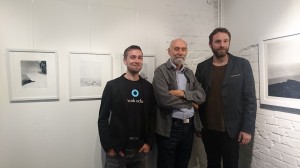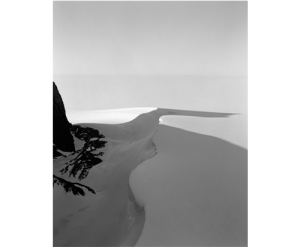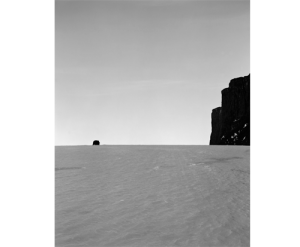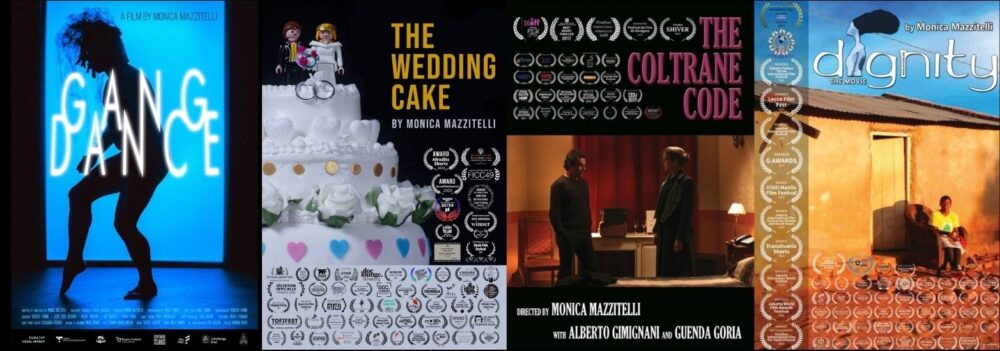 I return once more to discussing photography because of a new one-person show at the Elf Galleri in Gothenburg. Under the spotlight the Swedish photographer with the most international recognition Gerry Johansson, with an exhibit called “Antarktis” (“Antarctica”).
I return once more to discussing photography because of a new one-person show at the Elf Galleri in Gothenburg. Under the spotlight the Swedish photographer with the most international recognition Gerry Johansson, with an exhibit called “Antarktis” (“Antarctica”).
It consists of images printed from a negative obtained in analog large format (8 x 10 inches) taken during a long, six-week session while on an expedition in the Antarctic. In prohibitive conditions among polar temperatures and violent winds, which Johansson braved with great obstinacy, he would wait for the right moment to go outside and shoot in all directions. The composition of the images is one of the most rewarding elements of this collection, with images that are always that millimeter different from how we would have photographed them. A millimeter that truly makes all the difference between a sharp, clean image and a work of art.During our interview, while it didn’t surprise me, what struck me, as always, was the great humility (either a weakness or a strength in Swedish artists) with which Johansson candidly agreed that the photographs on display are beautiful, certainly, but were chosen from a thousand possible shots that were later rejected. Almost as if to minimize -timidly- the formidable allure of his work.
 And this characteristic is reflected in his photographic narration of the Antarctic: our small and insignificant existence in comparison with nature, which appears in the end so elusive and untouchable. The humility of our small existence, which should make us feel fragile and vulnerable. It brings to mind Leopardi’s “Dialogue between Nature and an Icelander” in which Mother Nature is not so much unkind as she is indifferent to us, oblivious to our existence because of the greater workings of her magnificence. We need to preserve this feeling of deferential awe, it should guide us in our daily choices linked to hydrocarbons. Some photographs have dark clouds as the background, a harbinger of menacing weather: we should take these as a warning of our misdeeds.
And this characteristic is reflected in his photographic narration of the Antarctic: our small and insignificant existence in comparison with nature, which appears in the end so elusive and untouchable. The humility of our small existence, which should make us feel fragile and vulnerable. It brings to mind Leopardi’s “Dialogue between Nature and an Icelander” in which Mother Nature is not so much unkind as she is indifferent to us, oblivious to our existence because of the greater workings of her magnificence. We need to preserve this feeling of deferential awe, it should guide us in our daily choices linked to hydrocarbons. Some photographs have dark clouds as the background, a harbinger of menacing weather: we should take these as a warning of our misdeeds.
 But one of the things that strikes us most in these images is that in most cases we don’t have dimensional references to comprehend what we are seeing. A crest of snow sculpted by the wind could measure one meter or one hundred; a rock spur could be a few centimeters, or as large as a ship. The images of Antarctic nature are as immense as they are immeasurable, and in contemplating them we are obliged to perform a difficult operation: to give up on being able to appraise them, to know what we are looking at, to understand it. And the difficulty lies in managing to not feel excluded by the impossibility of classifying, and thus judging, and thus controlling and in the final analysis having control over what we are seeing. We lose the comfort of possessing the coordinates and thus a certain truth. We lose the feeling of borders, containment and meaning: we are small, we are nothing. And since Earth is flatter and more squashed at the poles, the reduced curvature point enables a much longer view of the horizon, producing an effect of infiniteness that truly evokes Leopardi’s “vagueness”, and his poem “The Infinite”.
But one of the things that strikes us most in these images is that in most cases we don’t have dimensional references to comprehend what we are seeing. A crest of snow sculpted by the wind could measure one meter or one hundred; a rock spur could be a few centimeters, or as large as a ship. The images of Antarctic nature are as immense as they are immeasurable, and in contemplating them we are obliged to perform a difficult operation: to give up on being able to appraise them, to know what we are looking at, to understand it. And the difficulty lies in managing to not feel excluded by the impossibility of classifying, and thus judging, and thus controlling and in the final analysis having control over what we are seeing. We lose the comfort of possessing the coordinates and thus a certain truth. We lose the feeling of borders, containment and meaning: we are small, we are nothing. And since Earth is flatter and more squashed at the poles, the reduced curvature point enables a much longer view of the horizon, producing an effect of infiniteness that truly evokes Leopardi’s “vagueness”, and his poem “The Infinite”.
In the center of the photo Gerry Johansson, with the gallerists Dan Isaac Wallin e Jesper Witte
Translation: Ellen McRae
